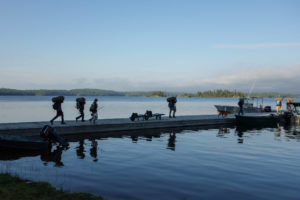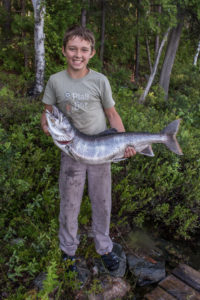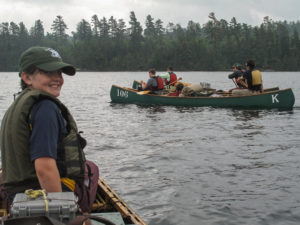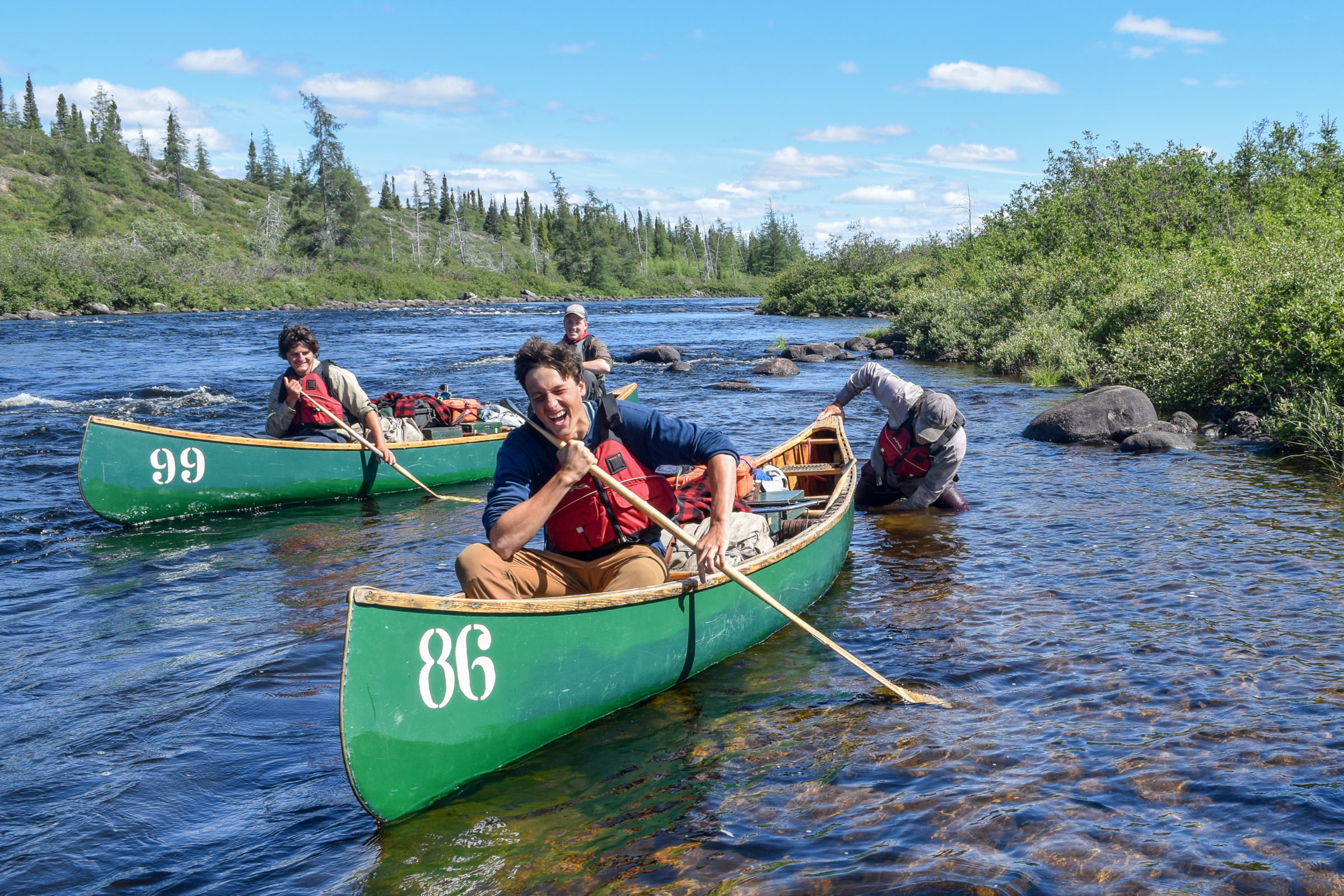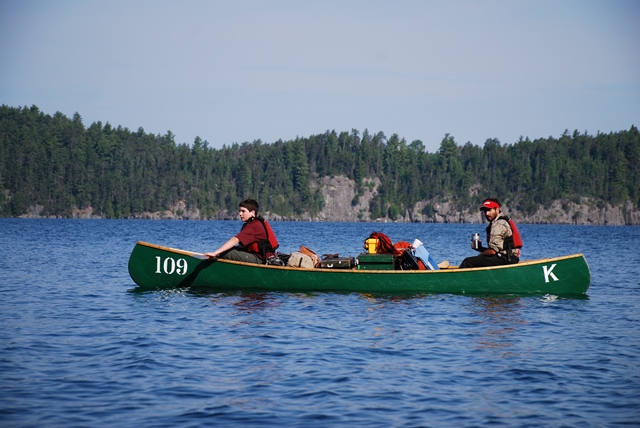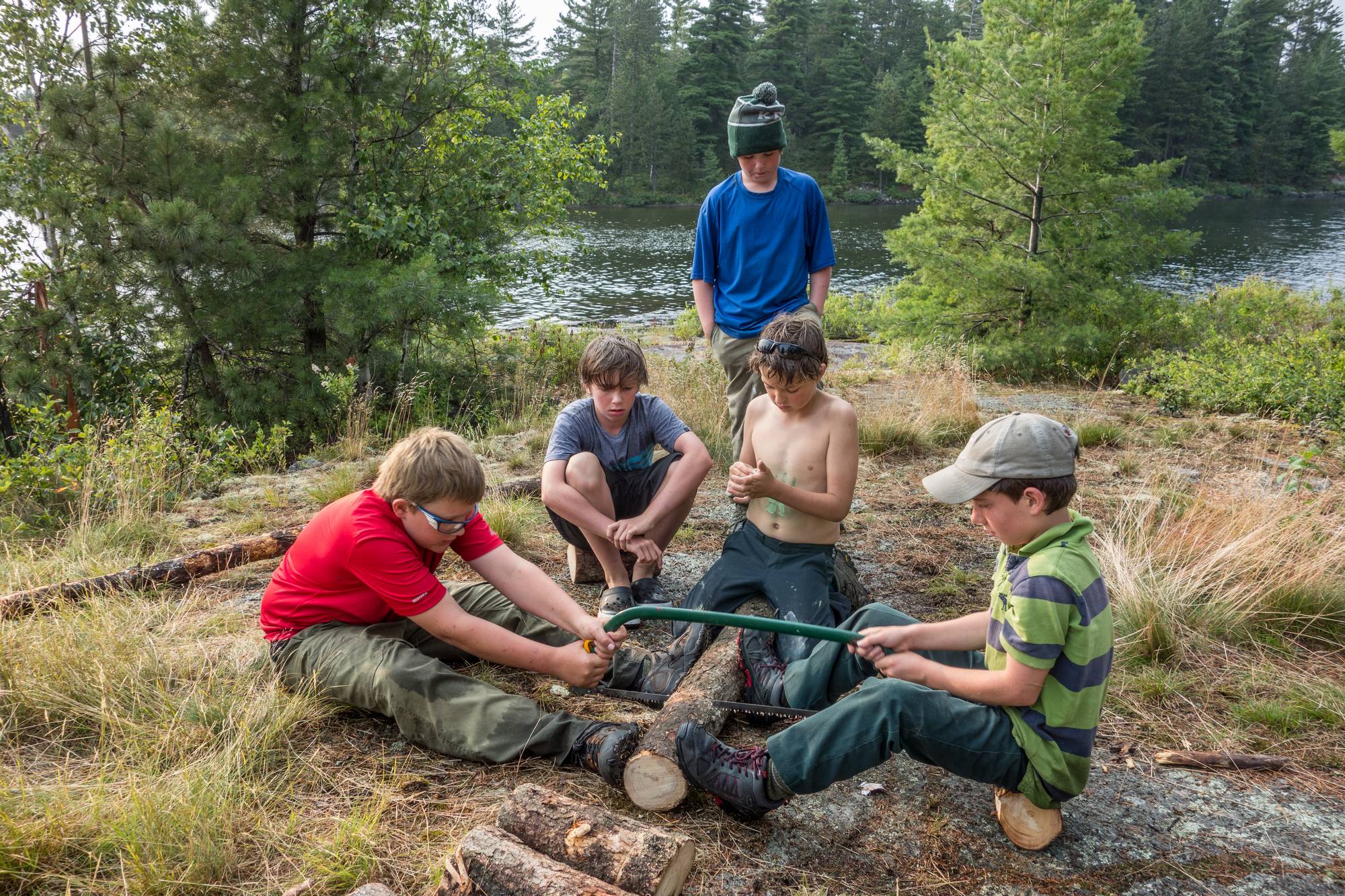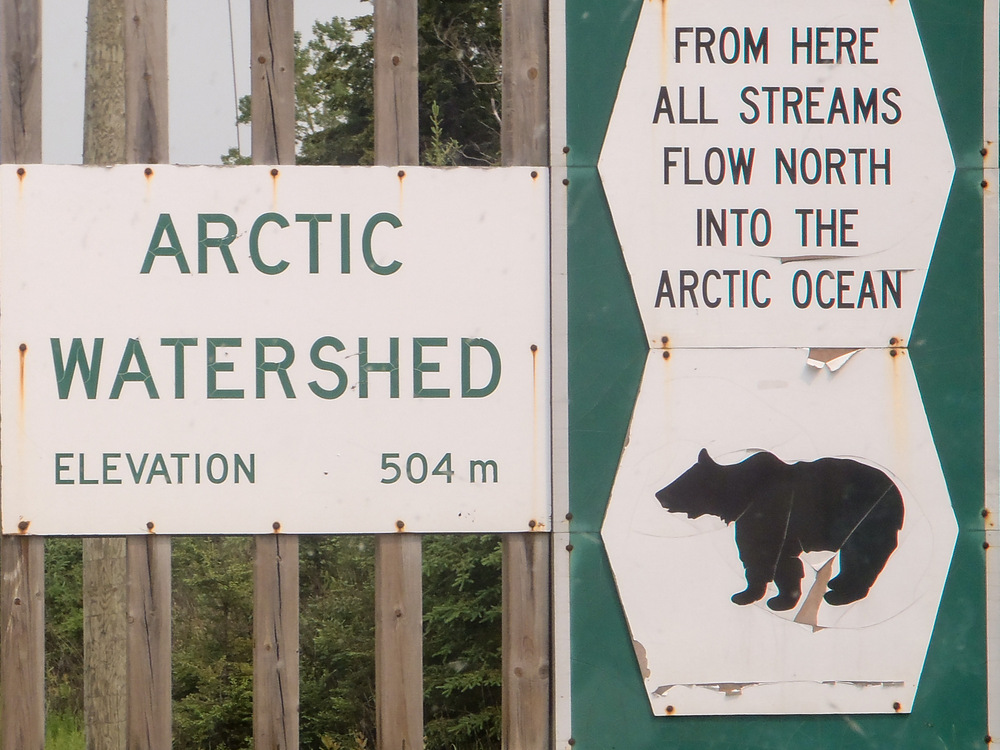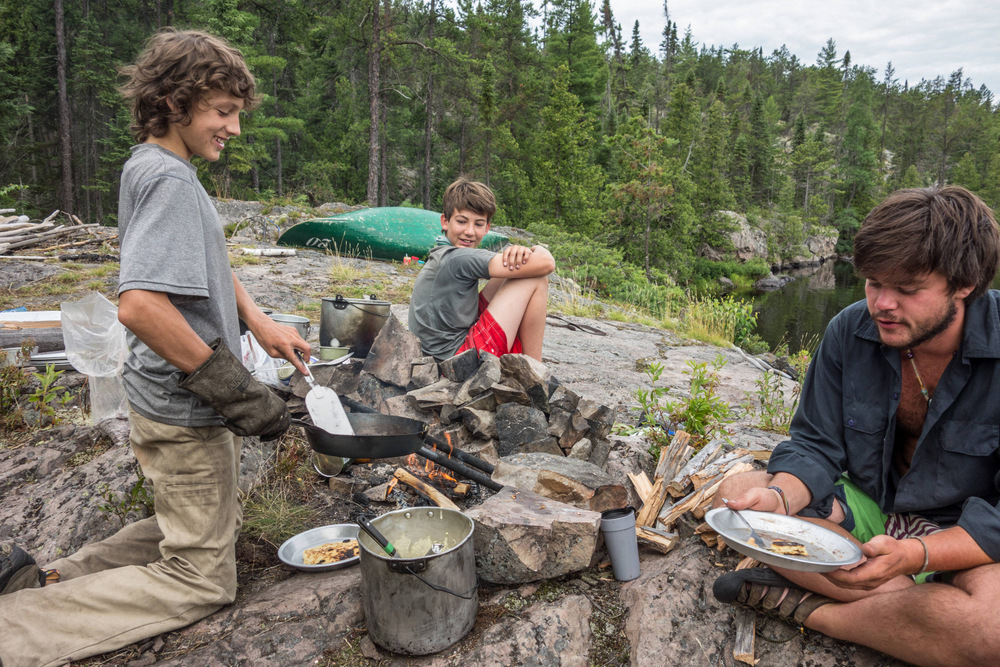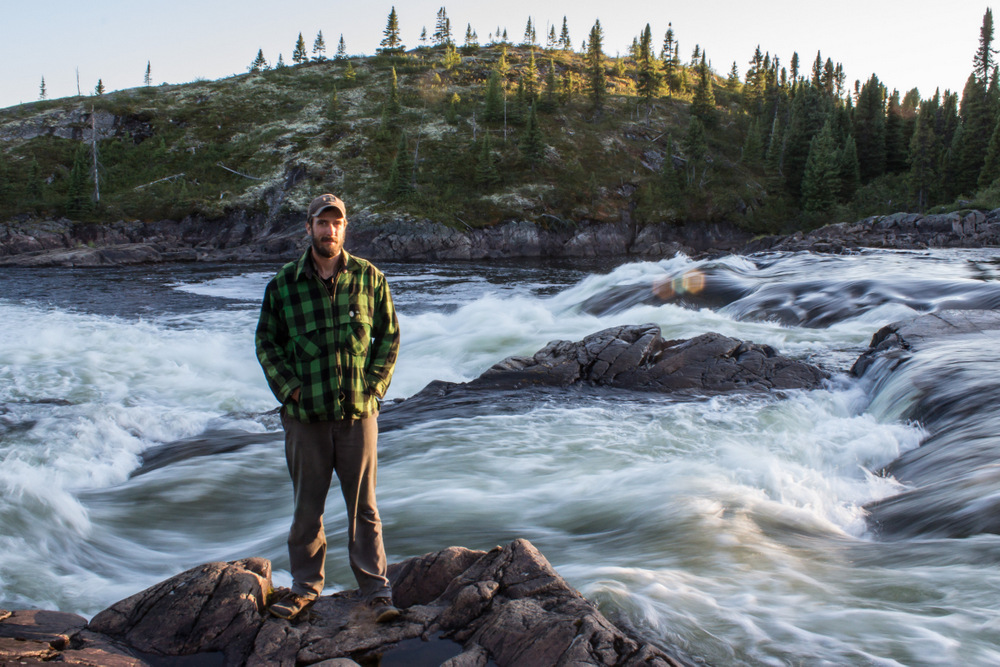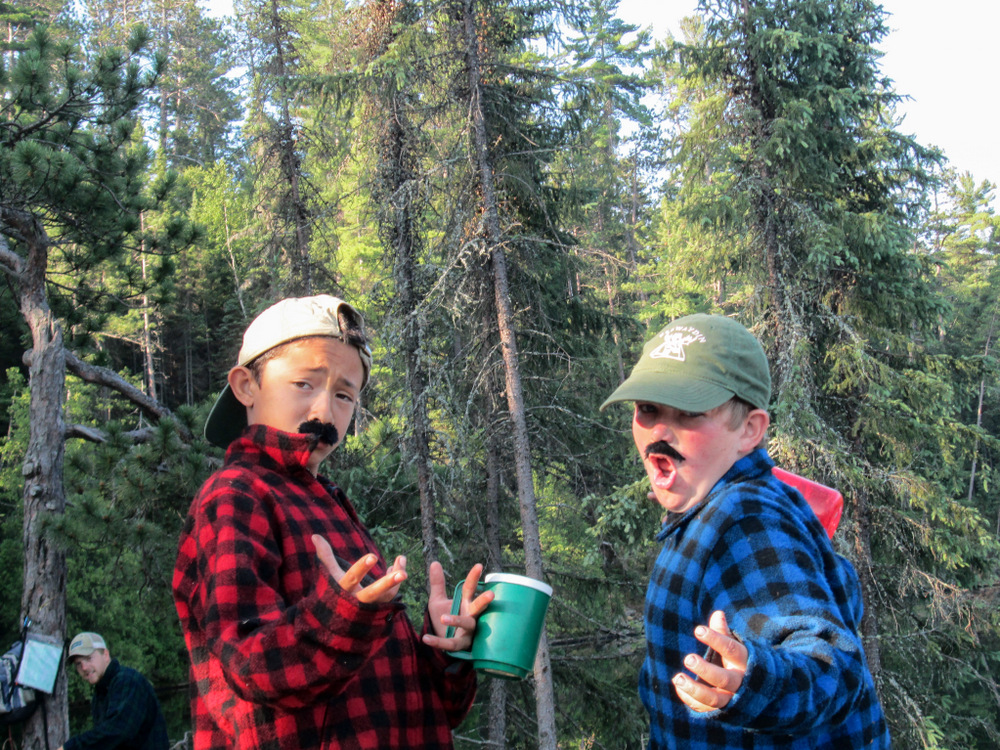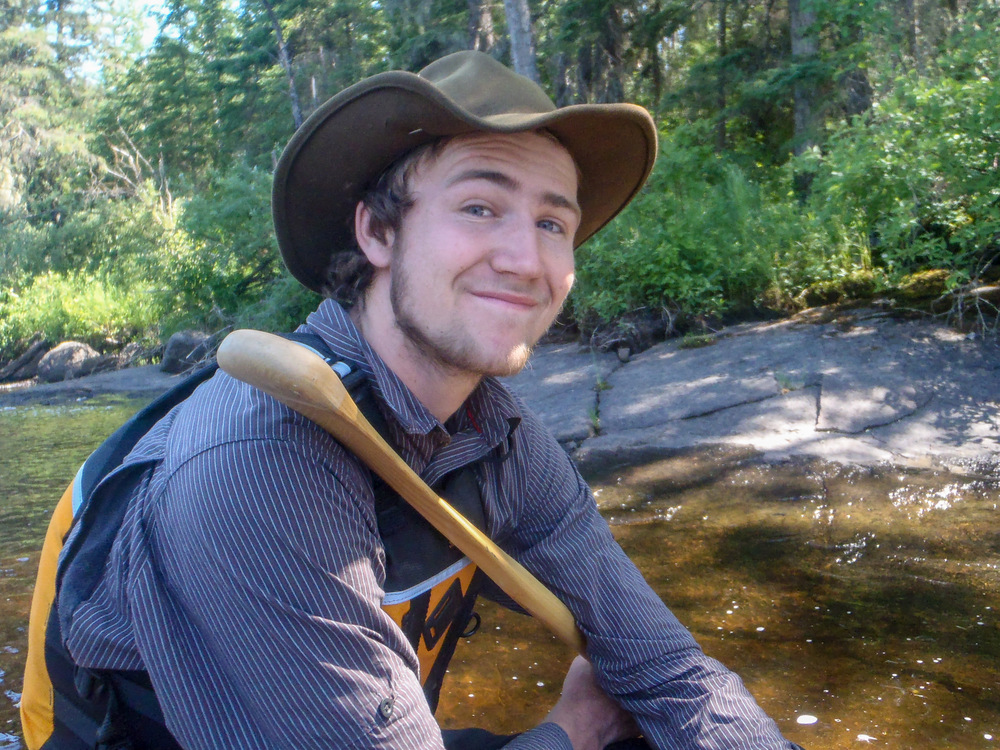Philosophy
We believe all campers should be given the opportunity to learn about their own abilities as individuals and their place in the environment as it relates to fellow humans and to nature. Through teamwork, a section (a group of 6-8 campers) grows into a cohesive unit, setting and achieving goals together. Staff seeks to build a positive group dynamic where members gain a sense of self-confidence, strength, leadership, and self-reliance. The camp motto “Help the Other Fellow,” adopted in the early years of the camp’s existence, embodies this focus on the group.
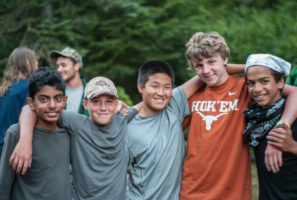
At Keewaydin a boy’s belief in his capabilities will grow throughout the summer due to the nature of our program, compassionate staff, supportive teaching, and opportunities to learn and master daily tasks. Through wilderness experiential learning, boys are able to take positive risks and experience significant growth, greater self-esteem, confidence, and inner strength. Wilderness canoe tripping also gives young men the opportunity to find their inner voices and the confidence to express those voices both at camp and at home.
The staff teaches campers the skills required to be successful members of their section. From starting fires, and preparing meals from scratch, to learning the paddle strokes necessary to navigate lakes and rivers, campers work toward mastery of all the requisite wilderness skills. By achieving the mastery of new skills, campers return year after year to help continue and eventually pass on the camp’s traditions to future generations.
Liam came home with a sense of confidence, self assurance, a twinkle in his eye, and a big smile on his face. The first dinner after camp he got up and starting doing the dishes after helping cook the dinner. He is much more social and was selected to a premier Seattle Lacrosse team traveling to Baltimore, Philly, Las Vegas, San Diego, and Denver. I attribute this to his experience this summer with Keewaydin.”
– Robin Gray, Keewaydin Parent
In order to achieve the goals mentioned above, the staff strives to:
- To help boys feel safe, accepted, and have a sense of belonging to the camp community.
- To give boys the opportunity to take positive risks and challenge themselves.
- To foster positive gender identity.
- To encourage healthy friendships.
- To develop and/or strengthen boys’ love for physical activity and the outdoors.
- To bolster the boys’ physical and emotional resiliency.
- To respect oneself, others, and the environment.
- To improve and master canoeing skills.
- To camp for extended periods of time in a wilderness environment.
- To learn decision-making for and with the group (vital to the success of the section).
- To learn food preparation skills and cook over a fire to promote self-sufficiency on trip and at home.
- To gain navigation skills.
- To care for and respect trip equipment.
- To recognize the accomplishments and personal growth that occur over the course of the summer camp season.
How We’re Organized
Each season we enroll about 100 male campers who are assigned to wigwams based on age, experience, and physical maturity. Each wigwam is split into smaller single-gender tripping groups of 4-8 campers called “sections”. The duration and difficulty of trips are determined by the age and level of experience of each section.
Boys 10-13 years old
Staff to camper ratio: 1-2
Manitou Wigwam (3 or 6-week sessions): Two trips (one 5-night and one 10-night) from our Devil’s Island base camp during a 3-week session. Campers who stay for 6-weeks will participate in two more trips following our MidSeason events.
Boys 13-15 years old
Staff to camper ratio:1-3
Waubeno Wigwam (6-week session): Three trips (one 4 night, one 11 night, and one 21 night) paddling out from our Devil’s Island base camp.
Experienced Boys 14-16 years old (have completed at least 1 summer in the Waubeno wigwam)
Staff to camper ratio between 1-3 and 1-4
Evans Outpost (6-week session): Based out of Keewaydin’s cabin on the shores of Kawaweogama Lake in western Ontario. Campers typically travel to the Evans Outpost via train from Temagami. Lake and river trips range in length from 15 to 25 days in the Wabakimi Provincial Park region. Campers learn to paddle moving water and build their hard tripping skills such as canoe carrying, felling, and chopping trees for firewood.
Experienced Boys 16-18 years old (have completed a summer at the Evans Outpost)
Staff to camper ratio between 1-5 and 1-7
Temagami Wigwam (6 or 7-week sessions): Expedition-length trips through remote regions of Ontario, Manitoba, Quebec, and Labrador. Following at least 1 summer at Evans Outpost, campers can move up to Section B. Section B is a more rigorous canoe trip, that may entail both up river and down river travel in more remote regions of Quebec, Ontario, or Labrador. Section A is our biggest and most rewarding adventure. Section A is the final canoe trip we offer young men at Keewaydin, which is 7 weeks long and culminates on Hudson Bay.
Life on a Trip
Life On Trip starts on Devil’s Island, our 50-acre base camp on Lake Temagami in the Near North of Ontario. Known for its pristine setting, abundant wildlife, and clear waters connected by portage trails that have been in use for generations, the Temagami region is the perfect setting for our canoe trips. Campers are quickly assigned to a group, their “section”; each section will paddle out from Devil’s Island on multiple trips of increasing length during the summer. Sections travel (making loops in the surrounding region) and camp on the shores of new lakes and rivers at night.
Travel days are filled with paddling, swimming, portaging, storytelling, singing, swimming again, cooking meals, eating, and making and breaking camp. Campers have a chance to see wildlife, waterfalls, and ancient and historic sites, as well as to learn and master new skills.
Rest Days (non-travel days) are often scheduled for a spectacular campsite on a beautiful lake, a fun place to swim, an old-growth forest to visit, a superb fishing spot, or a good place to wash clothes. Campers have a chance to relax by sleeping in, cooking extravagant meals, fishing, reading, playing games, and exploring.
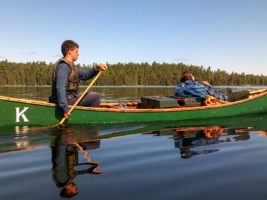
Base Camp
In Camp Activities
Time in camp between trips is spent relaxing (lying on a dock!) and preparing for the next trip. There are hot showers, a chance to send and receive mail the old-fashioned way (we provide campers with postcards to write home between trips), and three delicious dining hall meals a day. Staff and campers organize informal recreational activities such as basketball, frisbee, softball, soccer, volleyball, or tennis as well as swimming and fishing. During their time in base camp, campers help re-outfit their food supplies, wash clothes, organize their camping gear, and plan their next trip in the Keewaydin map room.
Campers have the opportunity to tell tales of their journeys at informal campfires that are open for all to attend. It is a time to celebrate each other’s shared experiences and sing a few Keewaydin songs.
Midseason Fun
Great Food, Funny Stories, Contests & Family Visits
MidSeason is a four-day event that marks the midpoint of the summer for campers canoeing out of base camp. There are contests where sections work together to demonstrate cooking and camping skills. In addition, there are informal individual competitions in swimming and canoeing. Evenings are lively with campfires and a MidSeason show where sections perform skits and sing songs with the entire camp. Friends and family can visit and stay at the Ojibway Family Lodge on Devil’s Island. It is a unique opportunity to witness your camper’s growth and get to know other folks who feel Keewaydin is a great place for their child to be.
EndSeason
Stories, Laughter, Accomplishments & Goodbyes
Before camp closes for the season, all sections are welcomed back to Devil’s Island. For two days campers participate in a friendly competition, ceremony, and a final campfire. The oldest boys and girls from the season’s long trips have the opportunity to tell stories of the summer, in their own words. It is a festive occasion where the youngest and oldest campers have the opportunity to share their adventures and spend time with family and friends. It is a magical experience. Friends and family frequently come up for the end of the season; reservations should be made at Ojibway Family Lodge on Devil’s Island well in advance.
Facilities
Keewaydin has a fully equipped infirmary and medical personnel on-site twenty-four hours a day while camp is in session. If further medical services are needed, hospitals are available in nearby North Bay and New Liskeard.
Campers can send and receive mail between their canoe trips. Campers will write a postcard home. Mail from Canada can take quite a while to arrive, in fact, it may land in your mailbox after camp is over!
Care packages
Do send a book, magazine, or deck of cards.
Do NOT send food, snacks, or candy. Why? We need to respect the health of other campers and their food allergies. And, we need to avoid food in cabins or tents that can attract wildlife such as squirrels, chipmunks, raccoons, or black bears.
Meals
While in base camp nutritious and well-balanced meals are prepared by the camp head cook and served family-style. While out on trip campers participate in cooking their own food, eating three hot meals a day.

Staff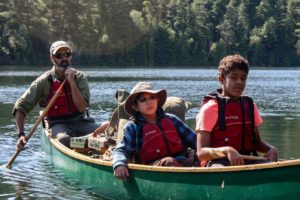
Trip Staff are Keewaydin’s greatest asset and share a passion for wilderness canoe tripping. Knowledgeable in the ways of the North Woods, lakes, and rivers, they are the heart of the Keewaydin experience. Our leaders are college students and graduates, many of whom teach in the winter months. A large percentage of the staff came to Keewaydin originally as campers. With an average of eight years of experience canoe-tripping, our leaders continually inspire growth, maturity, curiosity, and strength, enabling Keewaydin campers to build lifelong skills.
Each group is led by the staff who is the senior member of the trip staff. They are responsible for the overall safety and well-being of every member of the group and make all decisions regarding the group’s welfare. The staff is assisted by the guide, who is the second in charge and oversees all trip preparations. In addition, the guide plans the route, sets the pace, and is responsible for establishing camp, cooking, and taking care of the trip equipment. The trip staff involves campers with all of these activities as their age and interest permit. In younger groups, the staff and guide are assisted by up to three assistant staff to help with chores and provide additional supervision.
Staff Training
Staff training focuses on the tools trip leaders need to be successful. 95% of our staff are Keewaydin program graduates. All trip leaders complete the 80-hour Wilderness First Responder medical course, the eighty-hour Wilderness Water Safety course as well as training in leadership and canoe/equipment repair. The leadership training is specifically focused on building skills and self-esteem in the campers. The staff arrives at camp 2 weeks before campers to complete these courses.
In addition, our staff spends time learning about the social/emotional lives of boys with renowned psychologist and author, Michael Thompson (Raising Cain and Homesick and Happy about the positive impact of summer camps on boys and girls).
All of the staff are beyond excellent. These are smart, capable, soulful, thoughtful young men who are patient teachers. They all had a great impact on our son.” Bonnie Sikowitz, Keewaydin Parent
